Conducting roof painting with solar panels in place requires precision and care. In this guide, we’ll explore how you can maintain the integrity of your solar setup while giving your roof a fresh coat of paint. We’ll cover protective strategies, timing your project, and the importance of professional expertise, giving you peace of mind that your solar investment is safeguarded during the painting process.
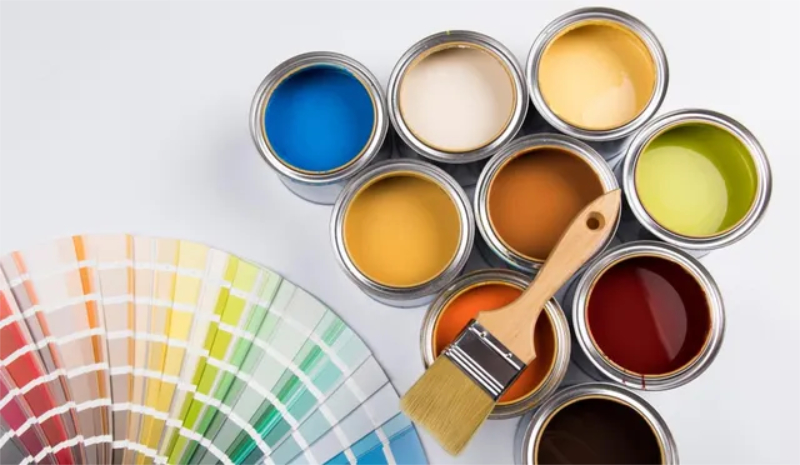
Navigating Roof Painting with Installed Solar Panels
Painting your roof while having solar panels installed can be a challenging task. Different roof types, whether they’re made of metal or tiles, can impact the process of installing solar panels and their efficiency. It’s also important to be aware that an increase in energy bills could indicate that the roof may require restoration, which could include painting.
Navigating through this process requires careful consideration of various factors, such as the type of your roof, the condition of your solar panels, and the need for professional assessment. How do you protect your solar investment during roof painting? What timing considerations should you keep in mind? Let’s delve deeper into these aspects.
The Importance of Professional Assessment
A professional assessment is crucial to determine the condition of your roof before the solar panel installation. This process ensures that the roof can support the solar panel installation without causing damage or leaks. It’s recommended to consult with professional roofing contractor if significant issues are encountered during self-inspections.
Having a professional team assess your roof offers several benefits:
- It guarantees the safety of your solar installation
- It ensures that any necessary repair work is identified and addressed promptly
- It ensures the longevity of your roof and solar panels.
Protecting Your Solar Investment
When painting a roof with solar panels installed, it’s crucial to cover the panels fully. This step prevents any damage or overspray and ensures the continued operation of the solar system. Professional painters use drip sheets, plastic wraps, and other protective layers to prevent contamination and protect your solar panels during roof painting.
Moreover, roof restoration can be safely conducted around installed solar panels on a roof that’s in reasonable condition and approximately 20 years old, by adequately covering and masking the panels. This process protects your solar investment and ensures that the solar panels continue to function efficiently even after the roof painting.
Timing Considerations
Timing is a crucial factor to consider when painting your roof with installed solar panels. Solar panel removal can lead to temporary reliance on grid electricity, which could result in higher utility costs until the panels are reinstalled. Therefore, it’s essential to plan your roof painting project at a time that minimizes disruption to your solar energy production and keeps your utility costs in check.
In addition to utility costs, consider the lifespan of your roof and solar panels when planning your roof painting. If your roof is nearing the end of its lifespan, it might make financial sense to schedule the roof painting before installing solar panels. This way, you can avoid the costs and risks associated with removing and reinstalling the solar panels in the near future.
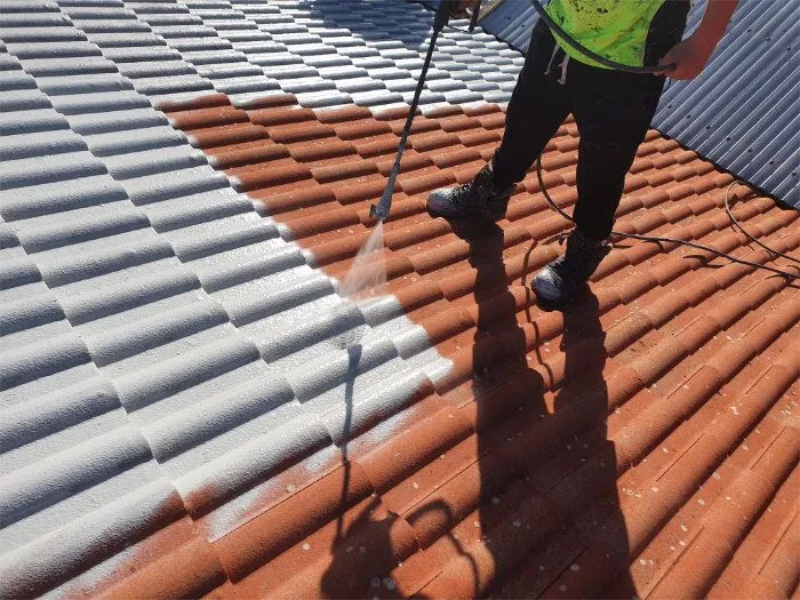
Preparing Your Roof for a Fresh Coat of Paint
Before the paintbrush meets your roof, there’s a crucial step to address: preparing your roof for a fresh coat of paint. This process includes:
- Inspection
- Cleaning and sterilizing
- Applying a sealant
- Selecting the right roof coating
- Deciding on a painting method for painting roofs
- The actual paint application
It’s essential to start with a clean roof by washing it thoroughly using a high-pressure power washer to remove old coatings, dirt, and grime.
Applying primer with an airless sprayer is a critical step that should begin at the roof’s peak and proceed downwards, allowing it to dry as per the manufacturer’s instructions. The application of at least two coats of paint is recommended for an optimal finish and durability. The roof should be painted from top to bottom using a roller, brush, or airless sprayer.
But what about the repair work needed before painting? And how do you select the right paint and colour for your roof? Let’s delve deeper into these aspects.
Cleaning and Repair Work
Cleaning and repair work form a vital part of the roof preparation process. Here are some steps to follow:
- Clean the roof using a garden hose or a pressure washer to remove accumulations of dirt, leaves, and other debris.
- For thorough cleaning, a pressure washer is suitable for new roof surfaces.
- Older or more worn areas might require a more cautious approach with a biocidal wash and disinfectant.
- Use a file brush to clean out roof joints to ensure no growth or dirt impacts the painting process.
Before painting, it’s crucial to repair any roof damage, such as cracked tiles or broken tiles, to ensure a smooth surface. For older tiled roofs, removing solar panels temporarily might be necessary to inspect and repair the entire roof surface adequately. By ensuring a clean and well-maintained tiled roof surface, you set the stage for a successful roof painting project.
Selecting the Right Paint and Colour
When it comes to roof painting, choosing the right paint and colour is more than just a matter of aesthetics. Heat reflective paint is beneficial for roofs, particularly on metal surfaces, as it helps in managing temperature extremes. It can also be applied on masonry, brick, fibro cement, and tiles with the correct primer. This type of paint contributes to durability by protecting against corrosion, mold, fungal and algae growth, and remains flexible over time.
The colour of the paint also plays a significant role. When choosing paint colours for the roof, consider the surrounding environment and climate. Here are some recommendations:
- Earthy tones are ideal for wooded areas
- Light colours are beneficial for hot climates to reflect sunlight
- Dark colours are suitable for retaining heat in cold climates
Selecting a roof paint colour that harmonizes with the home’s exterior can enhance aesthetics as well. For example, grey or brown houses can be complemented with a red roof, while houses with light-coloured walls may pair well with a brown roof.
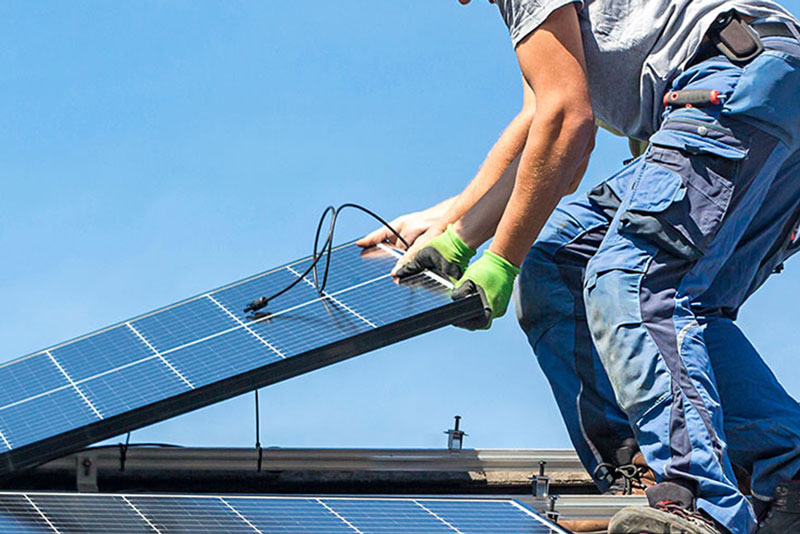
The Process of Removing Solar Panels for Roof Restoration
Sometimes, removing solar panels for roof restoration can lead to a more comprehensive job and opportunities for servicing or upgrading the solar panel system, especially if the solar panels have a longer lifespan than the roof or are installed over sections of an unpainted or compromised roof. However, the removal of solar panels also carries associated risks, such as the possibility of damaging the panels, voiding warranties, and halting energy production, resulting in higher electricity costs.
The removal and reinstallation of solar panels should be managed by roofing professionals to ensure the quality of the roof restoration work and to prevent any damage to the roof and solar panels. But how do you assess the need for solar panel removal? And what are the costs involved in this process? Let’s delve deeper into these aspects.
Assessing the Need for Removal
The need for having solar panels removed largely depends on the age and condition of your roof. Solar panels may need to be temporarily removed to allow for thorough roof repairs or restorations, especially for older roofs in poor condition. For roofs older than 30 years or in poor condition, removing solar panels is crucial for professionals to conduct comprehensive inspections and perform necessary maintenance.
However, while solar panels are removed during roof restorations, homeowners must rely on grid electricity, which may lead to increased utility costs. Therefore, it’s essential to carefully assess the need for solar panel removal and balance it against the potential increase in utility costs.
Calculating the Cost of Removal
The cost of removing and reinstalling solar panels during a roof restoration varies between $700 and $2000 AUD. In the Brisbane and Gold Coast area, the removal and reinstallation of a typical 20 panel solar array is estimated at approximately $1700+GST. The removal and reinstallation costs can be higher for homes with multiple stories or for solar systems with complex components, such as micro inverters.
However, it’s important to note that these costs during roof restoration are generally lower than initial installation costs because the electrical setup and permits are already in place. In the long run, you may realize savings if the roof is restored prior to initial solar panel installation. It’s essential to factor these costs into the overall expenses for roof restoration projects.
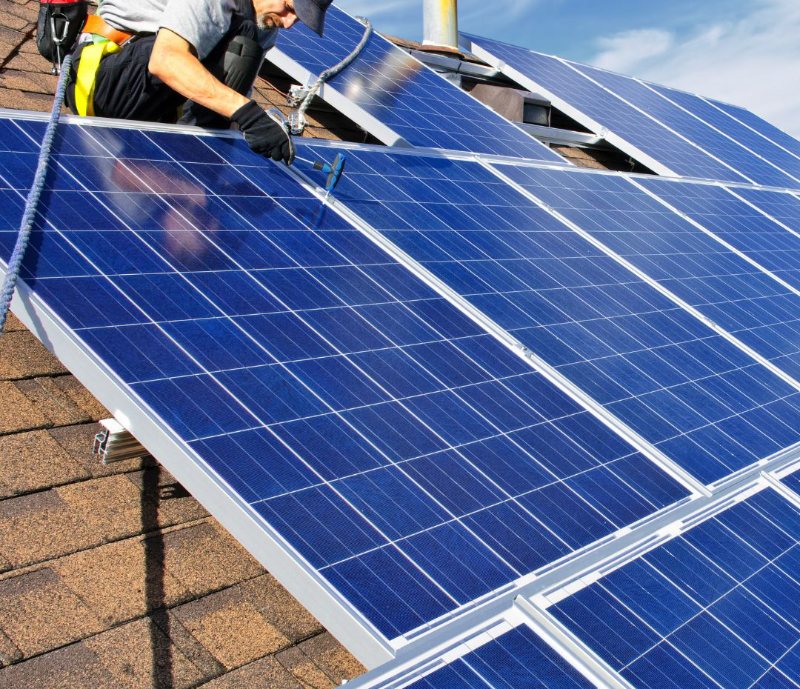
Installing Solar Panels After Roof Painting
After your roof has been painted and restored, it’s time to install the solar panels. Restoring the roof before installing solar panels ensures a smoother installation and prevents the need for near-term restorations. Evaluating the benefits and costs of roof painting prior to solar panel installation can lead to improved roof accessibility and provide opportunities for solar system upgrades.
But how do you ensure that your new paint is compatible with the solar panels? And how do you coordinate between roofers and solar installers? Let’s delve deeper into these aspects.
Ensuring Compatibility with New Paint
Before you install solar panels on your newly painted roof, it’s crucial to ensure that the paint is compatible with the roofing material and will not affect the warranty of the roof. Whether it’s metal roofs, terracotta, or concrete tiles, you need to select a paint type that meets desired outcomes such as UV reflection or corrosion protection.
After completing roof restoration, ensure an adequate drying period of several days before reinstalling solar panels. This waiting period allows the roof coating to properly dry and cure, ensuring a smooth and secure installation of solar panels.
Coordination Between Roofers and Solar Installers
Effective communication between roofers and solar installers is required to coordinate tasks like removing solar panels before roof painting begins and ensuring proper reinstallation and sealing post-painting. Roofers and solar installers need to establish a timeline that accommodates both the time needed to paint and dry the roof and the solar panel removal and reinstallation without causing energy production loss.
It’s important that both roofers and solar installers are on the same page regarding the project’s requirements to prevent any damage to the roof or the solar panels during the process. Both parties must adhere to safety standards and industry regulations to ensure a safe working environment and compliance with legal requirements.
Maintaining Your Painted Roof with Solar Panels
Once the solar panels are installed on your freshly painted roof, it’s important to maintain them properly to ensure their longevity and efficiency. Regular cleaning is necessary to maintain the efficiency of solar panels. In addition to cleaning, regular inspections and touch-ups of your painted roof are also crucial to ensure its longevity.
But how do you conduct regular inspections and touch-ups? And how do you clean your solar panels and roof surface without causing damage? Let’s delve deeper into these aspects.
Regular Inspections and Touch-ups
Before conducting touch-ups, it’s essential to inspect the roof for any damage like cracks or flawed areas. Repairing such defects ensures that the touch-up paint adheres correctly and the surface remains smooth. During the regular roof upkeep, particular attention should be given to the areas underneath solar panels. It’s critical to extend the paint coverage up to 100mm from their edges to prevent exposure and deterioration of the roof surface.
Using heat reflective paint for touch-ups offers several benefits:
- Maintains the roof’s aesthetic
- Contributes to the longevity of the paint and underlying surface by minimizing the damaging effects of extreme temperatures
- Regular inspections and touch-ups help maintain the integrity of your painted roof and ensure its longevity.
Cleaning Solar Panels and Roof Surface
Safely cleaning solar panels is crucial to prevent damage to the panels and the underlying roof paint. To manually clean solar panels, follow these steps:
- Use a soft cloth with soapy water to gently wipe the surface of the panels.
- Avoid using abrasives, waxes, bleach, harsh chemicals, and high-pressure water jets, as these can cause damage.
- Rinse the panels with clean water to remove any soap residue.
- Dry the panels with a soft, lint-free cloth to prevent water spots.
While it’s possible to clean solar panels yourself, professional cleaning services are recommended to mitigate the risk of improper cleaning which could result in damage.
Regular cleaning of solar panels and the roof surface not only maintains their efficiency but also prolongs their lifespan. By taking the time to regularly clean your solar panels and painted roof, you can ensure the longevity and efficiency of your solar investment.
Innovative Solutions for Roof Painting with Solar Panels
In the world of roof painting with solar panels, innovation plays a crucial role. Solar paint is an emerging technology with the capability to transform roof surfaces into energy-generating entities through its photovoltaic properties. Various types of solar paint technologies include perovskite solar paints, which are highly efficient, and quantum dot paints, which can boost electric current production by 20%.
Solar paint offers an increased energy return on investment (EROI) due to its lower requirement for materials and energy for production compared to traditional solar panels. Some solar paints incorporate passive radiative cooling properties that can lower surface temperatures, possibly reducing cooling costs for a building by up to 15%.
But what about heat reflective paint options and advanced protective coatings? Let’s delve deeper into these innovative solutions.
Heat Reflective Paint Options
Heat-reflective paint is designed to cool down roofing systems by reflecting solar radiation. This feature prevents heat from entering the home and reduces reliance on air conditioning. By reflecting up to 80% of solar energy, heat reflective paint significantly lowers the surface temperature of roofs, leading to decreased indoor temperatures and reduced air conditioning costs.
Reflective coatings, as an initial step in energy-efficient roofing, mitigate heat absorption by reflecting solar radiation, thereby lowering cooling costs. Solar paint with passive radiative cooling properties has the ability to reflect sunlight, which contributes to reducing surface temperatures on various surfaces, including tile roofs.
Heat reflective paint is an excellent option for homeowners looking to maximize the efficiency of their roof and solar panels.
Advanced Protective Coatings
Roof coatings play an essential role in protecting the roof from UV exposure, extreme weather, and temperature changes. Advanced roofing technologies now include features like moisture-activated adhesives, which perform better with moisture presence, and self-healing materials that automatically repair minor damages.
These advanced protective coatings offer enhanced protection for your roof, ensuring its longevity and efficiency. With these innovative solutions, roof painting with solar panels has never been easier or more effective.
Summary
In this comprehensive guide, we’ve navigated the world of roof painting with installed solar panels. We’ve explored the importance of professional assessment, protecting solar investments, and timing considerations. We’ve delved into the process of preparing your roof for a fresh coat of paint, including cleaning, repair work, and selecting the right paint and colour. We’ve examined the process of removing solar panels for roof restoration, and discussed the steps involved in installing solar panels after roof painting. We’ve also provided tips on maintaining your painted roof with solar panels through regular inspections, touch-ups, and cleaning. Lastly, we’ve explored innovative solutions for roof painting with solar panels, including heat reflective paint options and advanced protective coatings. With all this knowledge at your fingertips, you’re now equipped to navigate the exciting journey of maximizing home efficiency through roof painting with solar panels.
Frequently Asked Questions
Why is professional assessment important before installing solar panels?
Professional assessment is important before installing solar panels because it ensures that the roof can support the installation without causing damage or leaks. Therefore, it is crucial to have a professional evaluate the suitability of the roof.
How can I protect my solar panels during roof painting?
To protect your solar panels during roof painting, make sure to fully cover them to prevent damage or overspray.
What factors should I consider when selecting the right paint and colour for my roof?
When selecting paint for your roof, consider compatibility with the roofing material, UV reflection, corrosion protection, and the surrounding environment and climate.
What are the costs involved in removing and reinstalling solar panels during a roof restoration?
The cost of removing and reinstalling solar panels during a roof restoration ranges from $700 to $2000 AUD. These costs may vary based on the specific requirements of your project.
What are some innovative solutions for roof painting with solar panels?
Innovative solutions for roof painting with solar panels include solar paint, heat-reflective paint, and protective coatings. These options can enhance the energy efficiency of the building while providing added durability.

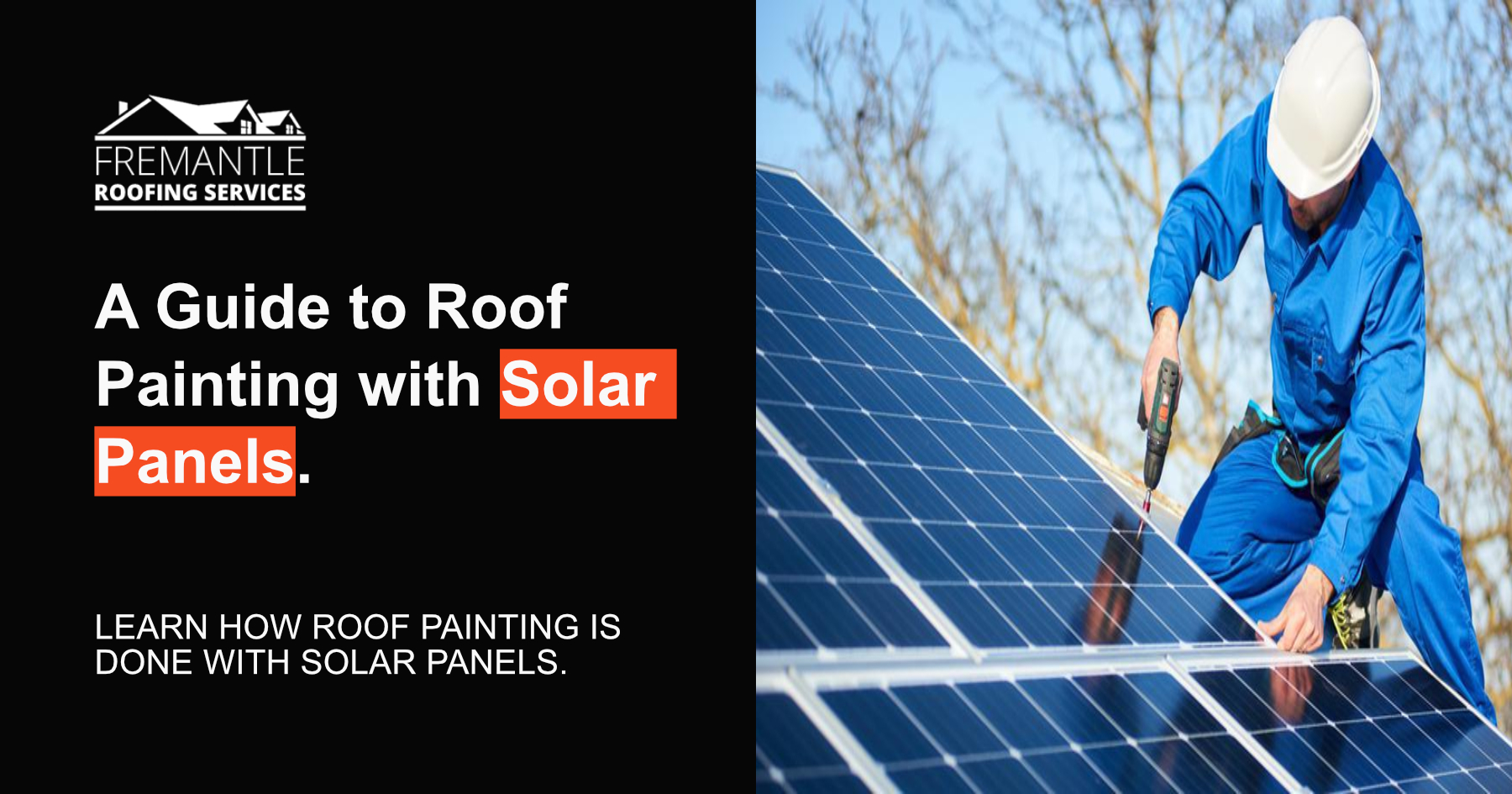




Leave A Comment